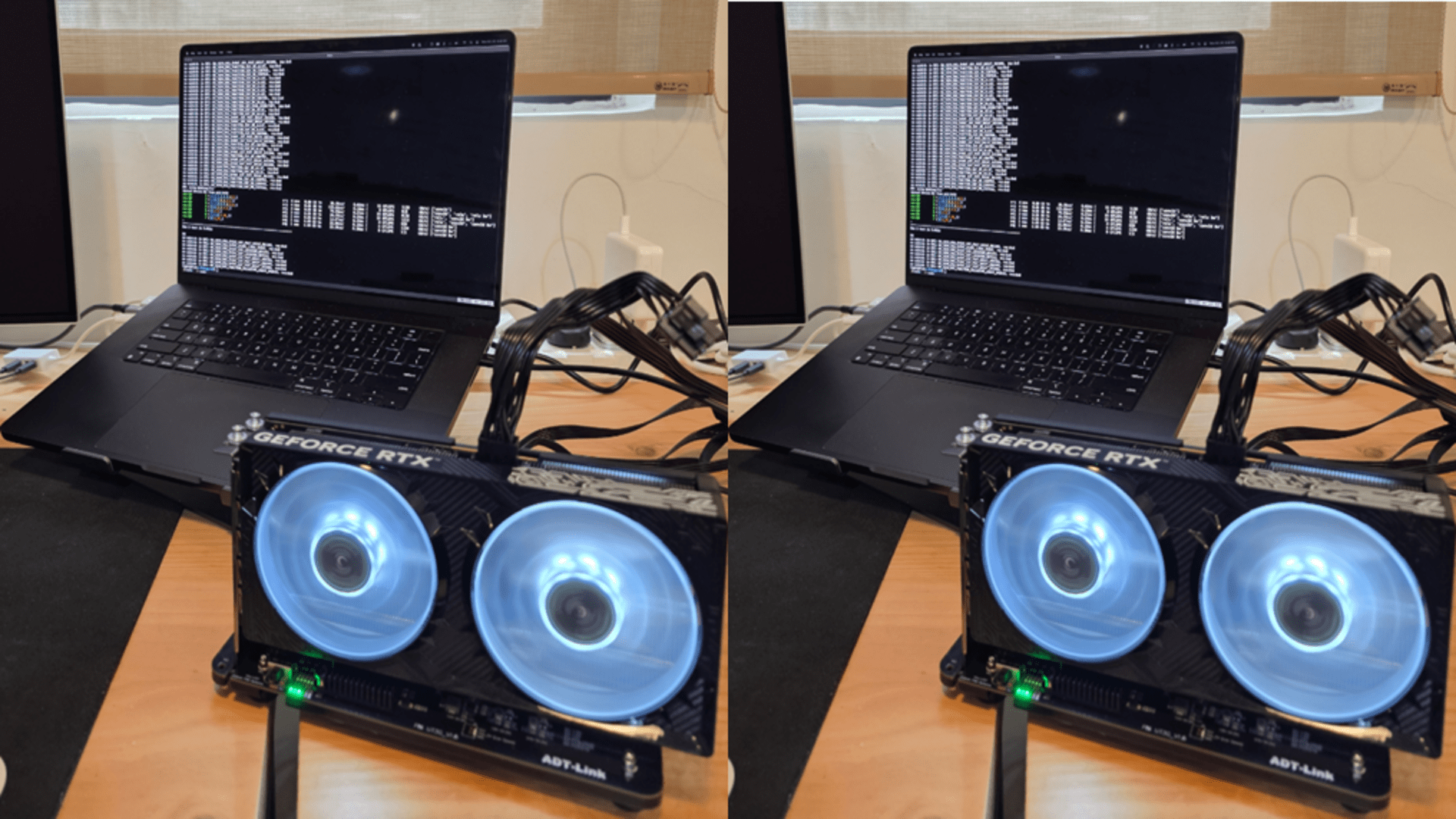- TinyCorp defies expectations by enabling Nvidia GPU to run on Apple silicon
- Developers can now run heavy AI workloads locally on MacBooks with RTX cards
- USB4’s native PCIe support finally gave Apple devices a workable GPU lane
For many years, the idea of running Nvidia GPUs on Apple MacBooks was considered impractical by developers and hardware enthusiasts.
Apple’s decision to move away from Intel processors and fully adopt its ARM-based M-series chips meant the end of official driver support for Nvidia and AMD.
These chips rely on an integrated iGPU, eliminating the need for external GPU compatibility on macOS.
Apple’s hardware design made GPU integration difficult
Developers and enthusiasts have long tried to bridge the gap by creating their own drivers, but success was limited and often unreliable.
TinyCorp, a small AI startup, has now found a practical path forward after years of failed attempts by others.
The company, known for building the world’s first external AMD GPU running on Apple Silicon over USB3, has now managed to get Nvidia GPUs running on M-series MacBooks over USB4 and Thunderbolt 4 connections.
Although TinyCorp hasn’t detailed the full technical process, its success likely depends on using native PCIe support and the higher bandwidth offered by USB4 and Thunderbolt 4.
These standards were designed for high-speed devices such as GPU docks, giving developers a cleaner route than the older USB3 interface.
The company’s post on X showed a MacBook Pro M3 Max running its open source Tinygrad framework on an external Nvidia GPU via a USB4 dock.
However, there are important limitations. The drivers developed by TinyCorp are specifically aimed at AI workloads rather than gaming or display rendering.
Users cannot expect the external GPU to drive a monitor or speed up macOS graphics.
Instead, the focus is on completing compute-intensive AI tasks, which could be transformative for developers who rely on local resources.
This achievement has direct implications for those working with LLMs and other AI tools that demand high GPU power.
By pairing Nvidia RTX 30, 40, or 50 GPUs with MacBooks, developers can handle larger data sets or train models locally rather than relying entirely on cloud environments or data centers.
Such flexibility could make Apple’s laptops more relevant in AI research and machine learning experimentation, although this remains a niche use case for now.
TinyCorp’s work is impressive, and pairing Apple hardware with Nvidia GPUs in any capacity is an accomplishment many thought would never happen.
However, its reliance on custom drivers and external docks means the long-term practicality of this solution remains to be seen.
Follow TechRadar on Google News And add us as your favorite source to get our news, reviews and expert opinions in your feeds. Make sure to click the Follow button!
And of course you can too follow TechRadar on TikTok for news, reviews, unboxings in video form and receive regular updates from us on WhatsApp Also.




